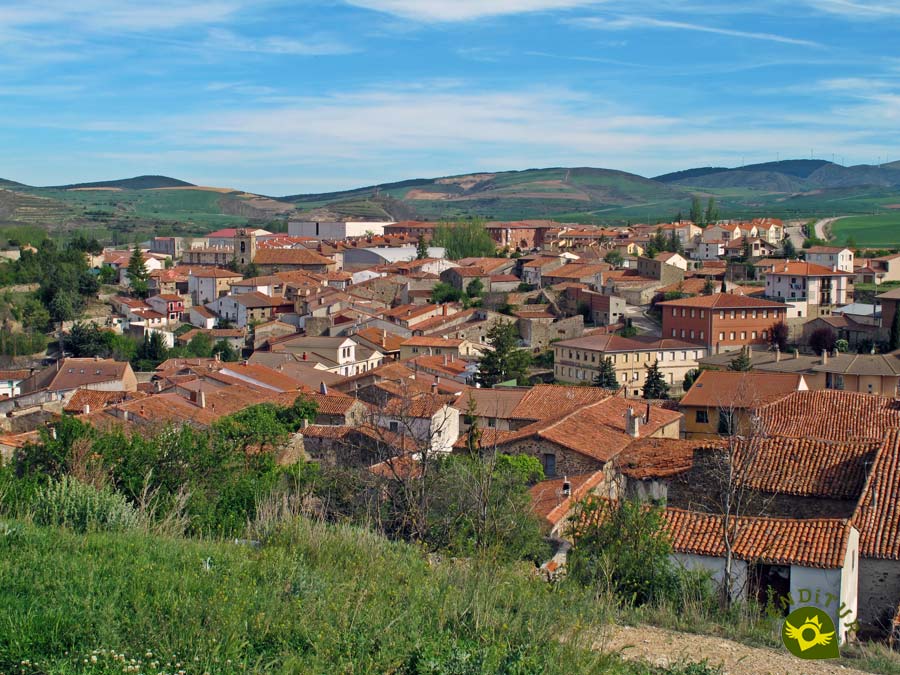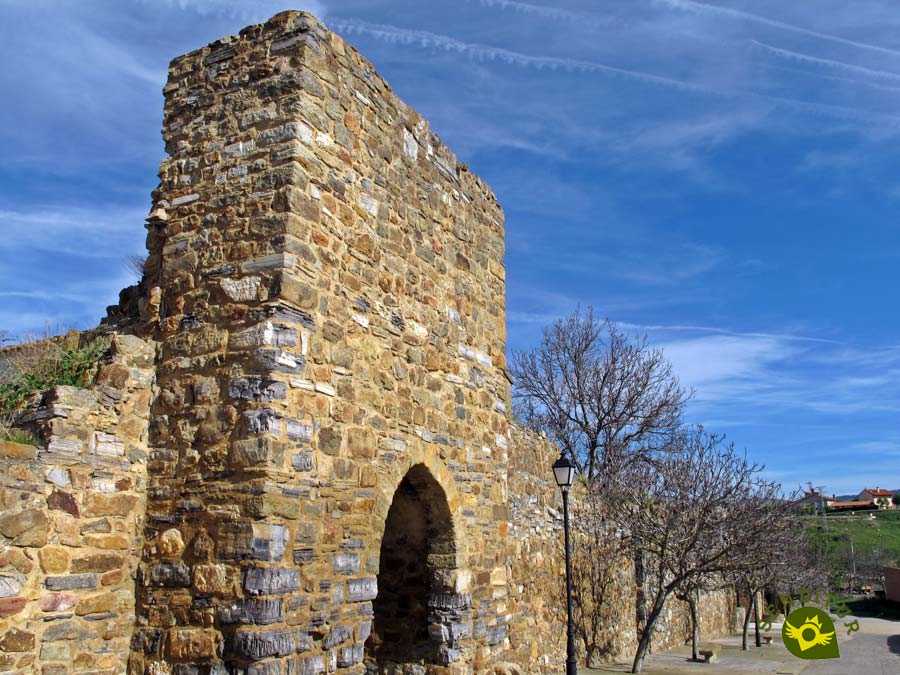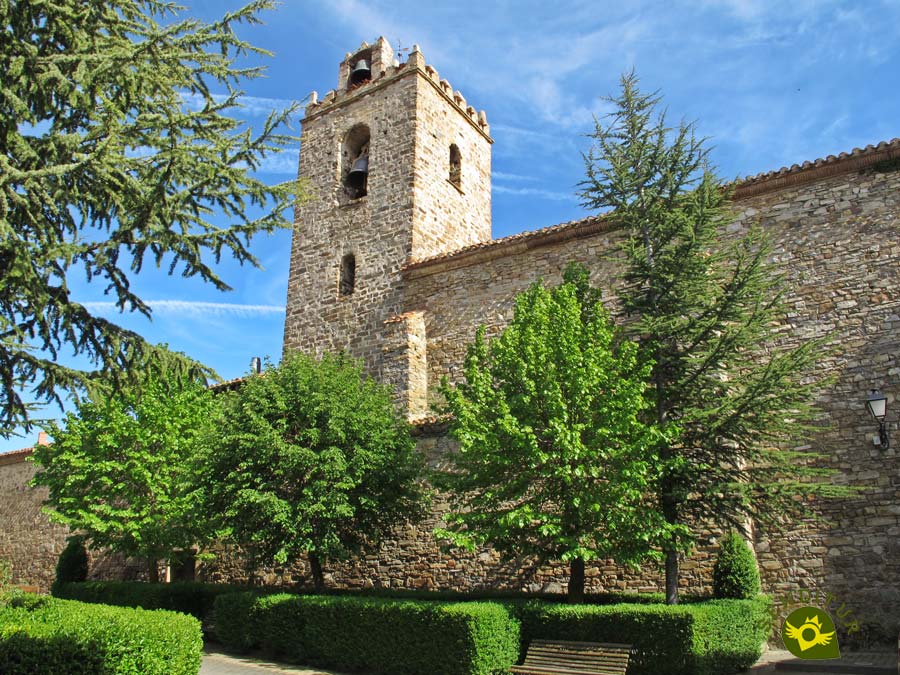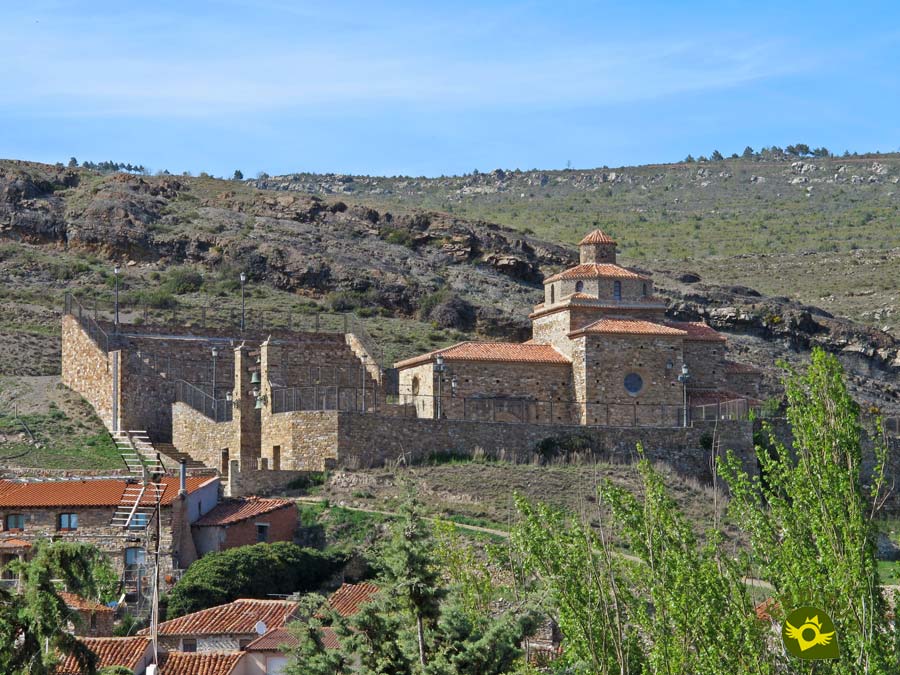It is a Soria town, crossed by the Linares River, located in the northeast of the province, in the region of Tierras Altas y Valles del Tera, being the regional centre of services. Its municipal district includes the towns of Las Fuentes de San Pedro, Matasejún, Palacios de San Pedro, Taniñe, Valdenegrillos and Ventosa de San Pedro. Already in the Bronze Age there were settlements in the place. The Romans arrived after defeating the Celtiberians, 3rd and 2nd century B.C. From the following years, we know of the existence of a Visigothic population in the area.

But there are few data on the history of San Pedro Manrique. It is known that in the Middle Ages it had its castle at the top of the hill and almost the whole town was walled, also that at that time it was called San Pedro de Yanguas and that it was renamed San Pedro Manrique in the 15th century, in the time of King Enrique IV, when the town lost its status of royalty and became a lordship under the jurisdiction of the Manriques. Life in San Pedro Manrique was closely linked, between the thirteenth and sixteenth centuries, to the development and impetus given to sheep farming by the powerful organisation of the Mesta, and its decline in the market also meant the decline of the area, although in the eighteenth century there was a considerable economic boost for the region with the flour mills, the batans and the weaving workshops. In the nineteenth century, during the War of Independence, the village played a special role. Many say that the local historical archives disappeared around that time. The 20th century brought certain advances to the town that gave it its first glimpses of a certain modernity.

Stroll through the narrow and steep streets of San Pedro Manrique, surrounded by houses with cantilevers and trusses, from the 16th and 17th centuries, discovering the coats of arms that some of them display on their facades adorned with windows and balconies with magnificent grilles, under the attentive gaze of the remains of the castle built around 1421 and declared an Asset of Cultural Interest in 1949, and imagining themselves protected by the wall, of which one door remains, which once surrounded the town, is a pleasant task for the visitor who on his journey will reach the parish church of San Martín de Tours, which sits on the remains of a previous Romanesque temple and which preserves inside a Calvary from the 12th or early 13th century and in the main altarpiece an image of the Immaculate Conception that was housed in the church, today in ruins, of San Miguel, and even the hermitage of the Virgen de la Peña, rebuilt on the previous one, which was another of the four churches that the town had and which collapsed at the beginning of the 20th century, and of which it still has its original façade, to get to contemplate the Romanesque ruins of the old Templar monastery of San Pedro el Viejo. Undoubtedly, the visit will put a rich and culinary culmination tasting the famous sausage of San Pedro Manrique or sweet black pudding made with cinnamon, raisins, sugar and bread, liver soups and pickled game, rabbit or pork, all it washed down with a tasty and sweet tinado, zurracapote or soak.

San Pedro Manrique celebrates the feast of San Juan on 24 June and on 23 June, in the evening, it celebrates the super famous Paso del Fuego. The festivity of the Cross of May is on the 3rd of the same month. In San Pedro Manrique the Virgen de la Peña is also celebrated and in the La Traslación festivity, which is held at the end of the summer, the Virgen de la Peña and San Pedro are carried in a solemn procession from the Humilladero hermitage to the Virgen de la Peña hermitage.
In San Pedro Manrique, on the night of San Juan, the so-called Paso del Fuego (Passage of Fire) takes place, where a bonfire is lit next to the Virgen de la Peña hermitage and the villagers go barefoot and pass over its embers with their bare feet without burning them, although most of the time they carry someone else on their backs. In these fiestas, the móndidas are popular, three girls who, wearing the traditional costume and carrying a large basket on their heads, recall the girls who, along with agricultural products, were given as offerings to the Moorish kings. Nowadays they are like the queens of the festivities in other towns.
The festivities of Paso del Fuego and Las Móndidas, in San Pedro Manrique, were declared in 2005 as a Site of Cultural Interest, as a place of ethnographic interest, within the category of Historical Site. In 2008, they were declared of International Tourist Interest, being the only popular celebrations in the province of Soria with such distinction. The Paso del Fuego has provoked great interest from scholars and scientists who say that one effect of the passage of the fire is to synchronize the heart rhythms of practitioners and spectators.

Legend has it that at the time of the Reconquest the lord of the castle of San Pedro Manrique was Don Nuño. This knight had a beautiful daughter who was in love with Don Gonzalo and who was excited about the preparations for the wedding when Don Gonzalo had to go to war against Abderramán II who was on his way to Castilla. Blanca, that was the name of the girl, went up the tower to say goodbye to her beloved, then the Moor Yacub Ibn Saida, saw her and was captivated by her beauty. Blanca had the habit of going to the hermitage of the Virgin of the Rock to pray and one day the Moor kidnapped her and took her to the castle of a nearby village. When Don Nuño found out, he quickly came to the rescue and engaged in a serious battle, causing the Moors to flee and take the girl hostage. They were in full flight when the Apostle Santiago appeared dressed as a pilgrim and taking a small stone from the ground he put it in his sling and threw it against the Muslims who saw, amazed, how the stone as it approached them became bigger and bigger until it crushed them, not before releasing Blanca who was helped and taken to safety by a dove.
MORE ROUTES AVAILABLE, DON'T MISS IT...
MORE PLACES AVAILABLE, DON'T MISS IT...
At San Pedro Manrique the SO-650 road joins it with Oncala and from here the SO-615 connects it with Garray and the N-111 at a short distance from Soria. The SO-630 road reaches San Pedro Manrique on the one hand from Matalebreras, on the N-122 between Soria and Ágreda, and on the other hand from the SO-615, but this time in the surroundings of the towns of Yanguas and Villar del Río.
San Pedro Manrique has a bus service that covers the route of the regular line Arnedo-San Pedro Manrique-Soria from Monday to Saturday in return. It also has a public transport service with reservation of place by calling 900 204 020 from Monday to Sunday between 8 a.m. and 8 p.m. indicating the route. The routes of this service are: San Pedro Manrique - San Andrés de San Pedro, Valdenegrillos - San Pedro Manrique, Vizmanos - San Pedro Manrique, Verguizas - San Pedro Manrique, Diustes - San Pedro Manrique, Valdeprado - San Pedro Manrique and Valduérteles - San Pedro Manrique. The place of the bus stop is in the marquee arranged for it in La Picota.
SENDITUR is not responsible for any variation in the information described, as well as for the misuse of its guides and recommends that everyone be responsible and prudent in carrying out the activity. Likewise, we invite you to document yourself with books and specialized guides to complement the information described. From the commitment of SENDITUR with Nature and the respect to the balance of the environment, SENDITUR urges you to travel in a responsible way, with low environmental impact and respecting at all times the Natural, Cultural and Social environment wherever you go. For any suggestion, SENDITUR invites you to send an email to .
Continue watching …